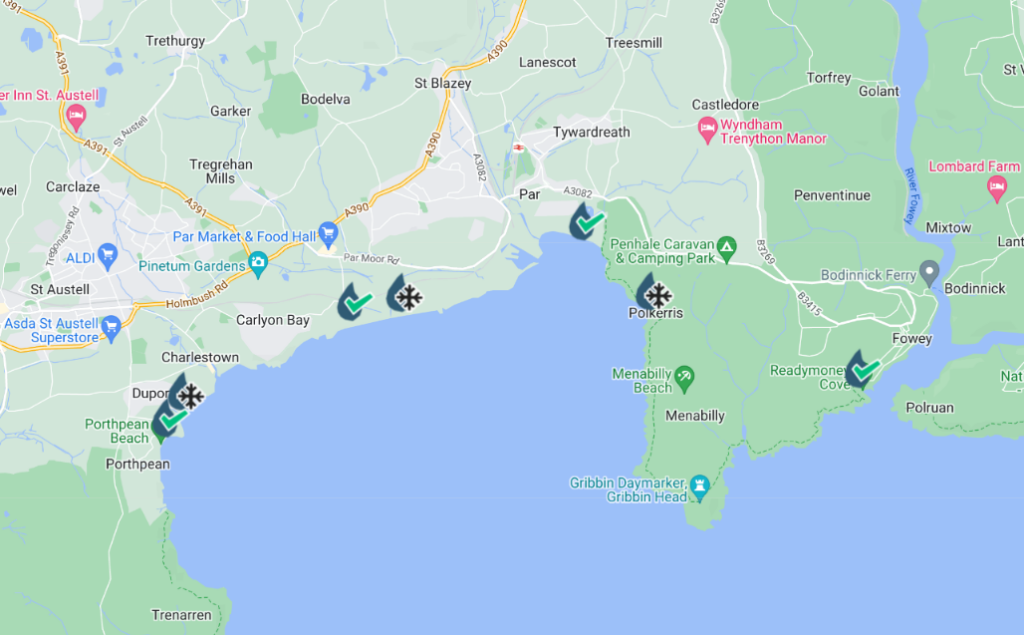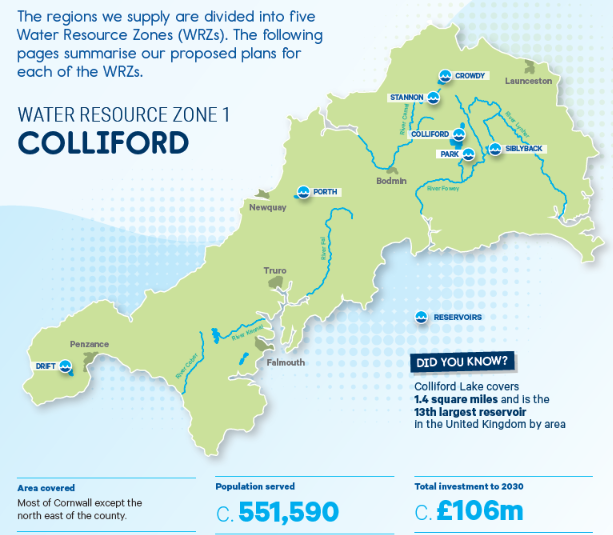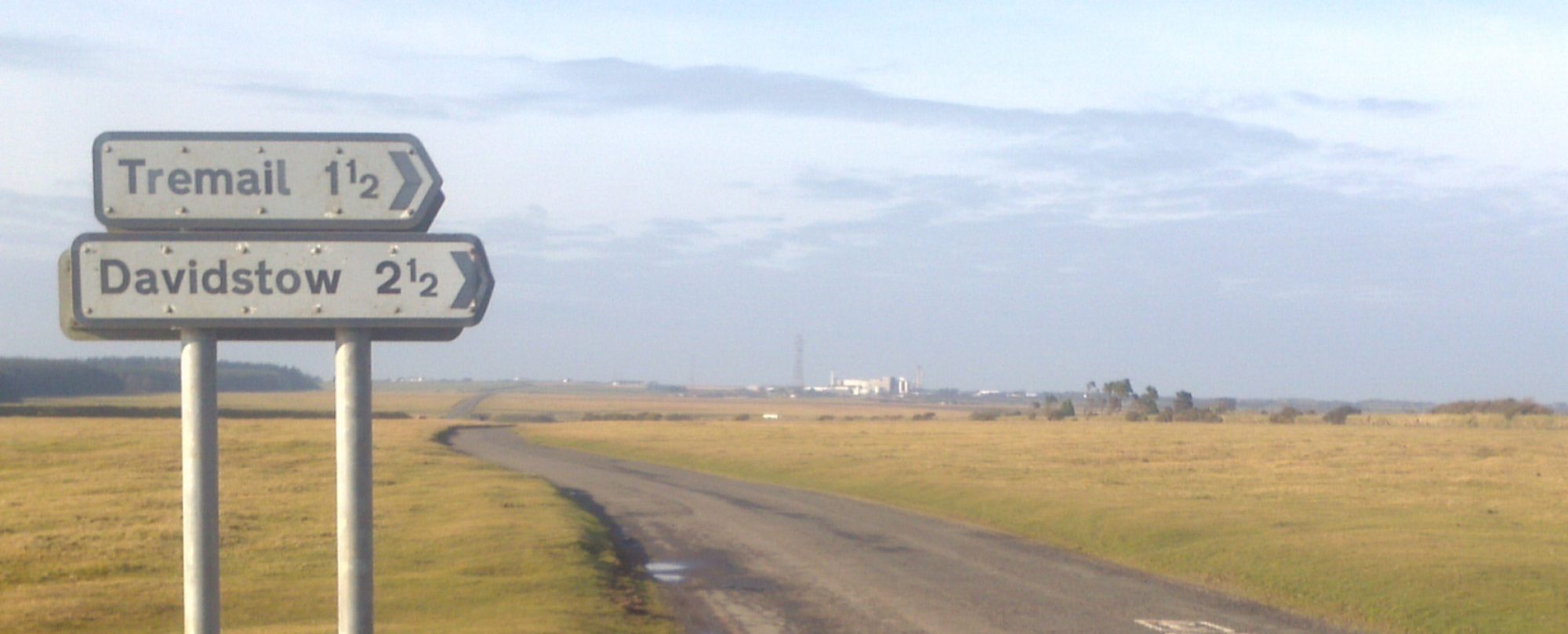Due to unforeseen circumstances our coverage of South West Water’s proposed desalination plant continues at:
“South West Water Announce Desalination Plant in Cornwall“
Continuing my due diligence regarding the current “astonishingly low” water level in Colliford Reservoir I’ve been searching for hints on South West Water’s recently announced plans for two new desalination plants on the south coast of Cornwall. I’ve been poring over their draft Water Resources Management Plan (dWRMP for short) for 2024, which I downloaded quite some time ago. It’s a hefty document, but given the recent media frenzy about possible desalination plants in Cornwall I’ve been over it with the proverbial fine tooth comb. I eventually discovered the information I was searching for in the last place I looked.
Chapter 8 on “Supply-Side Option Development” seemed the best place to start. It had this to say:
The potential addition of repurposed mines and quarries and desalination as supply side options for our SWW WRZs are being developed in response to the current (2022) drought. At this time, no specific options can be included within our feasible list. Work is ongoing and we envisage options will be progressed to a stage where they can be included in our approach by the time of our Statement of Response. Refer to Annex C of this Chapter for more information on our considerations on the use of desalination as part of our revised dWRMP.
Turning to Annex C, I read:
As part of our response to the current drought we are revisiting opportunities for desalination in our Colliford supply zone. This activity will change our planning assumptions.
Specifically, we are working to a plan that will restore our reservoir levels to a robust operating position through to the end of 2023. We aim to achieve this through a combination of activities including, relevantly, developing desalination facilities on several locations along the Cornwall coast. None of these initiatives or investments are included in this dWRMP (as per our approach set out in Chapter 1, they are not yet built or licenced), but will be progressed to a stage where they can be included in our water resources plan by the time of our Statement of Response.
We have produced a scenario as part of this dWRMP that assumes an additional 10 MLD of supply availability by 2025 in our Colliford WRZ to understand the impacts of likely supply side increases.
Now “several locations along the Cornwall coast” by 2025 isn’t very specific, and it doesn’t sound as though it would fix the looming problem for summer 2023. After much frantic searching I eventually turned to Appendix 1.1, SWW’s “Insight into the 2022 drought”. That included this interesting information:
There are six drought interventions that we are looking to deliver in 2023 (we also have drought interventions in reserve, including further desalination, additional permits and potential recovery of mines water):
5. Desalination (Par) and Desalination (Polkerris). These schemes are not in our dWRMP24 options. They have been developed in recent months as a specific response to the current drought. The schemes provide significant volumes of water to support the recharge of Colliford Reservoir. Whilst these options have potentially higher financial and (depending upon energy source) carbon costs than some of the other options being considered, there is a strong confidence that they can deliver the required volume of water within the required timeframe.
These options also have relatively low ecosystem impacts as they do not reduce river/ reservoir levels. We have completed cost and carbon forecasts within our dWRMP data tables based on the work completed to date. We are continuing to build cost confidence as engagement and design progresses.
Here’s how the area looks on this morning’s Surfers Against Sewage water quality map:

Note that the deadline for commenting on South West Water’s draft WRMP is the 9th of May 2023.
I have asked South West Water if they would like to comment on this article.
P.S. See below for SWW’s response.
Here’s some interesting information from an article by Ella Jessel in this morning’s online edition of New Civil Engineer:
Tim Naughton, co-founder of Salinity Solutions which supplies containerised desalination systems, said given the short timeframe SWW was unlikely to be building a permanent plant.
Naughton explained that he expected it would be a containerised system, built offsite and transported to the coast to “plug and play”. This option is mobile and doesn’t require any civil engineering or planning permission, he said.
He added: “Containerised solutions are likely to create would create much less of an eyesore along Cornwall’s coastline and would not leave a legacy of civil infrastructure.”
If the electricity and water supply is available, Naughton said the plants could be up and running by the end of Summer.
Naughton said conventional reverse osmosis uses a lot of energy and is unlikely to be viable with solar or other renewables, though its possible the plants could be powered partially by renewable sources increasing the proportion over time.
Regarding Tim’s final statement, South West Water assured me otherwise on Twitter a few days ago!
Whilst South West Water make up their minds about where to hurriedly install a few desalination plants along the south coast of Cornwall, here’s Tim Naughton and Richard Bruges of Salinity Solutions with news of a “shocking paradox that is at the centre of our global drive to Net Zero”:
According to Richard:
[Edit – March 16th]Our world needs lithium our planet can’t afford.
This afternoon I remotely attended a South West Water webinar introducing their draft Water Resources Management Plan. Whilst desalination plants were mentioned they weren’t covered in detail. One initial recommendation to those attending was to read the WRMP Customer Summary, which you can download here. The foreword by SWW CEO Susan Davy explains that:
The South West is particularly vulnerable to climate change, given its 860 miles of coastline. The drought of 2022 has been devastating for river flows, groundwater levels and reservoir stocks, putting water resources under pressure for customers. By 2050, summers in the South West will be on average 2-3 degrees Celsius warmer than today, with at least 20 days a year of extreme heat. Also by 2050, the chance of summers as hot as the one we have just experienced in 2022 will increase to 50%.
Coupled with the drought of 2022, since the pandemic we have seen the resident population and visitor numbers swell even further – with our longer-term population growth expectations and associated demand being realised right now. We do not know if that population surge since 2020 will continue, but we do anticipate a further 350,000 people will be living and working in the region, increasing the need for water as well as calling for an increase in housing connected to our network.
From this, one thing is clear – whether you are a household or business customer, a farmer, or a water company – water resources will become stretched, with competing priorities…
The Customer Summary also includes a section on the Colliford Water Resource Zone:

Obviously SWW need to plan to balance water supply and demand across the Colliford WRZ, with preferably more of the former than the latter! On the demand side they state that:
Consistently working at our current rate to reduce leaks, we will keep working towards a 50% reduction by 2050.
We will be replacing meters with smart meters and installing meters for customers who request them, giving us more insight and control over the water supply system.
whereas on the supply side:
We plan to balance the flow of water by pumping more back up into Colliford and Siblyback reservoirs, ensuring more consistent river levels all year round. We’ll increase how much water we can treat at Restormel water works and increase how much we put into supply from Stannon Reservoir.
In the section of the summary devoted to their “Adaptive Strategy” for the Colliford WRZ South West Water say that
In the most extreme future scenario, there could be a challenge to the supply-demand balance as early as 2025. If this is the case, we could introduce other supply options to pump water from quarry lakes sooner than planned to quickly fix the gap. This could also be implemented around 2037 if our monitoring shows the development of an adverse scenario at that point. We may identify the need to develop additional schemes for Colliford WRZ in the future to anticipate variations to the plan.
This is all well and good in the long term, but what about the potential “challenge to the supply-demand balance” in the summer of 2023 for example? During the webinar’s question and answer session I asked:
In Cornwall we are currently still enduring a “drought”!
What “scenario(s)” will get us out of it?
I have yet to receive a convincing answer.
[Edit – May 10th]According to South West Water’s latest “Water Resources Update”:
David Harris, South West Water’s Drought and Resilience Director, said: “We have found two potential sites for desalination in Cornwall where we are currently running detailed suitability assessments. As part of the process, we are looking at working with potential suppliers and will be able to share dates of our next phase when this is complete.
I cannot help but wonder when that phase will be completed! David added:
We are working closely with the Environment Agency and Cornwall Council to get work started as early possible. Meanwhile, we have recently launched our Save Every Drop campaign urging customers and visitors to the region to reduce their water consumption wherever possible.
To be continued…

South West Water have responded as follows:
Here’s another interesting snippet of information from yesterday’s WRMP webinar.
South West Water’s successful “Stop The Drop” campaign over the winter has morphed into “Save Every Drop“. As SWW put it:
The new campaign comes complete with a guide to saving water at home and a variety of “Easy ways to save water at work”:
Finally, for the moment at least, here’s a recent video from South West Water’s Twitter feed:
https://twitter.com/SouthWestWater/status/1635681573965111296
“Save Every Drop” hopes to make a significant dent in the demand side of the potable water balancing equation in Cornwall next summer, but what of the supply side?
More in due course…
Absolutely ridiculous to be considering desalination in an area where we get about a meter of rain per year. Plenty of water in the local rivers, Dart, Teign etc
Running cost will be astronomic
Reverse Osmosis is the only way and uses a lot of Electricity!Permanent plants powered by steam need a fuel supply and there will be corrosian problems! I have managed both types in the middle east,Caribbean and my last one in Australia.Feel free to contact me!
I read the proposal for a desalination at par with interest when raw sewage is still being leaked 3/4 mile away at Polkerris into the sea.
I suggest that the facts would be a a disaster if released to the national press at the time of your press briefing.
Current situation is Madness.
I fail to understand why a Desalination is being considered at Par , the most effective location would be Saltash, the energy requirement would be substantially less using the brackish water from the Tamar and it would be simple to suspend immersion hydro turbines in the fast flow under the Saltash bridge where the depth available is >17 meters and a flow 1-1,5 knots of tide is available for 80% of any 24 hour period. East Cornwall receives it’s water from Colliford which could otherwise better supply Mid Cornwall with its supply thru existing mains. When are SWW going to take responsibility to generate/ store own power instead of buying “green energy credits” from suppliers.